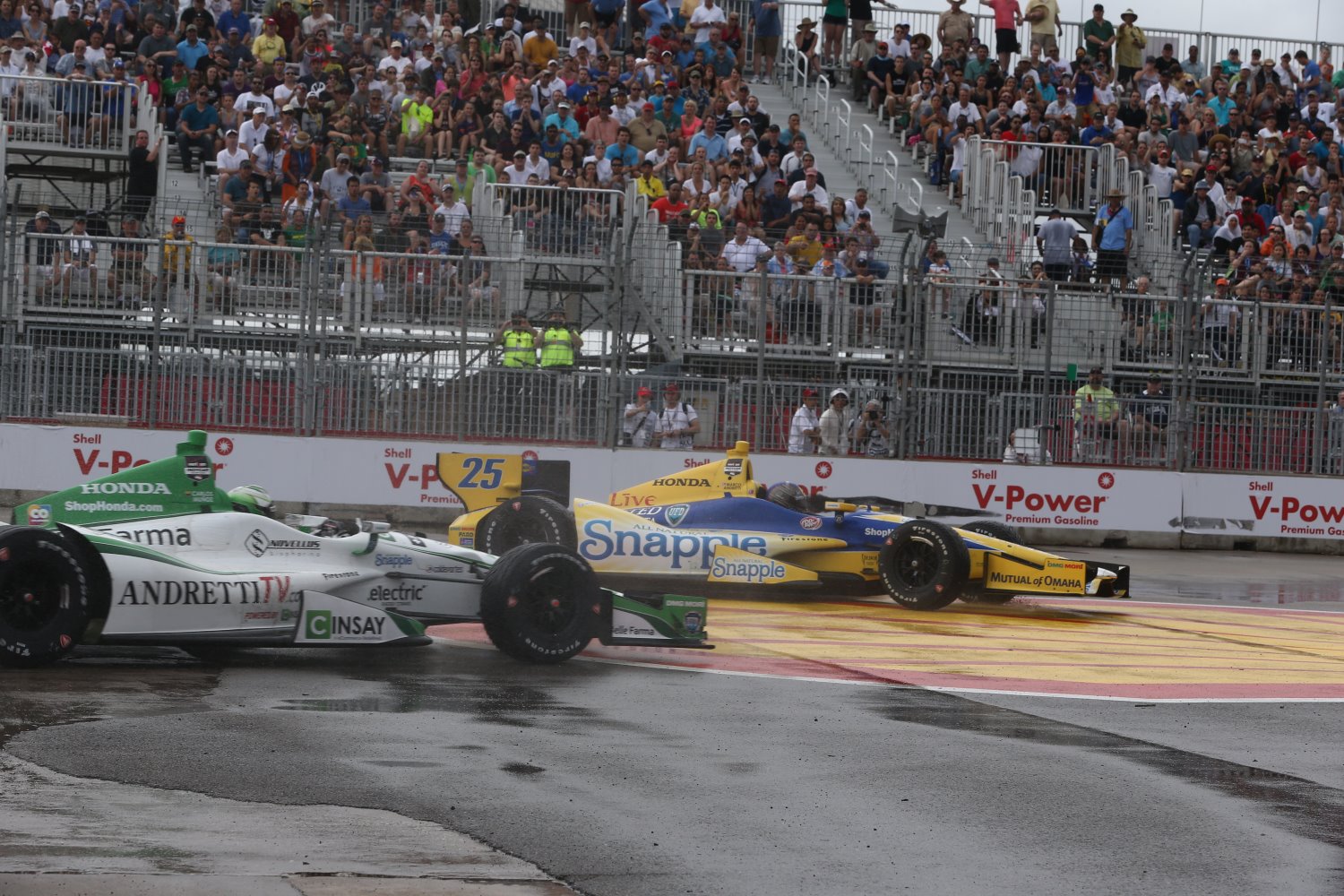Spec racing in IndyCar: long live the spec!
 |
| Spec cars and a bumpy track are a recipe for great racing |
Love it or hate it, spec racing is now part and parcel of the Verizon IndyCar Series, and that is a good thing. This particular view will be met with pitchforks and torches from many segments of the IndyCar universe, but like street races, it's here for the foreseeable future.
What I am NOT saying is that open development of chassis, motors, aero, and other parts is bad for racing. It's not. The COST of this development is bad for the racing business in today's economy. Want proof that economic warfare in racing is bad news? Look at F1. IndyCar has a vested interest in keeping costs down and has done so in a way that benefits the most people.
The Shell and Pennzoil Grand Prix of Houston was a great example of what the parity in spec racing gives the fans. Parity equals better racing. Better racing SHOULD equal more fans at the race or viewers on television in the future. The Jack Hawksworth/Juan Pablo Montoya battle was the scintillating example of big racing small and small coming out on top. Fans should love this action.
The winners at the Shell and Pennzoil Grand Prix of Houston, Carlos Huertas of Dale Coyne Racing and Simon Pagenaud of Schmidt Peterson Hamilton Motorsports are the beneficiaries of this parity. While it is hard to argue that SPH is small, it is certainly not of the size of the Penske, Ganassi, or Andretti operations. They can compete precisely because the spec gives them parity of equipment. Now the differences are drivers, pit deltas, and strategy, and none of those areas are affected by the car's specifications. In the Saturday race at NRG Park, Dale Coyne won with strategy, not money. Toss in the Sunday podium of Simon Pagenaud and Mikhail Aleshin from Schmidt Peterson Hamilton Motorsports and Jack Hawksworth from Bryan Herta Autosport, and you have the poster for what is right about the current formula in IndyCar: cost containment and development restrictions that lead to all the teams on the grid being competitive.
Of course, not everyone in the IndyCar universe is happy about spec racing. Certainly many fans champion unlimited spending and unlimited regulation that allows the richest teams to dominate the sport with research and development. That's one way to look at it. Bankrupt the small guys or force them to race for the mid-pack/backmarker trophy. The bigger teams, who demanded cost containment, only wanted costs contained if their ability to develop/fabricate/source certain parts that gave them an advantage was unfettered. With the old Dallara chassis, the shops of Penske, Ganassi, and Andretti were able to use their expertise and money to shave tenths and hundredths from lap times, and in an age when the rest of the car was the same, that was enough to dominate. Other than shocks, the teams can no longer develop parts to find an edge. Parity on the track is the result.
In Houston, Mike Hull complained of a spec part failing on Scott Dixon's car, and Will Power alluded to a spec shim for camber falling out. These were parts that the bigger teams could identify as weak and fabricate themselves. While not making a car faster, it could make it more dependable. To teams with the resources to identify and fix this and other similar problems, spec racing chafes because they can't use in-house R & D to make their cars faster and more dependable. What's the advantage of being big if it doesn't help in putting cars on the podium? Well, the larger teams can still hire the best people to help with preparation. And better preparation is an advantage, just not one that necessarily makes the car faster.
Fans are a fickle bunch and identifying what will bring them through the gates and put them in front of televisions is a science and an art best left to the experts. But if they would ever ask if I preferred great equipment or great racing, the racing would win. And if the Shell and Pennzoil Grand Prix of Houston is the result of spec racing, then why change it? For now, spec racing rules. Long live the spec! Mark Wilkinson/motosport.com
